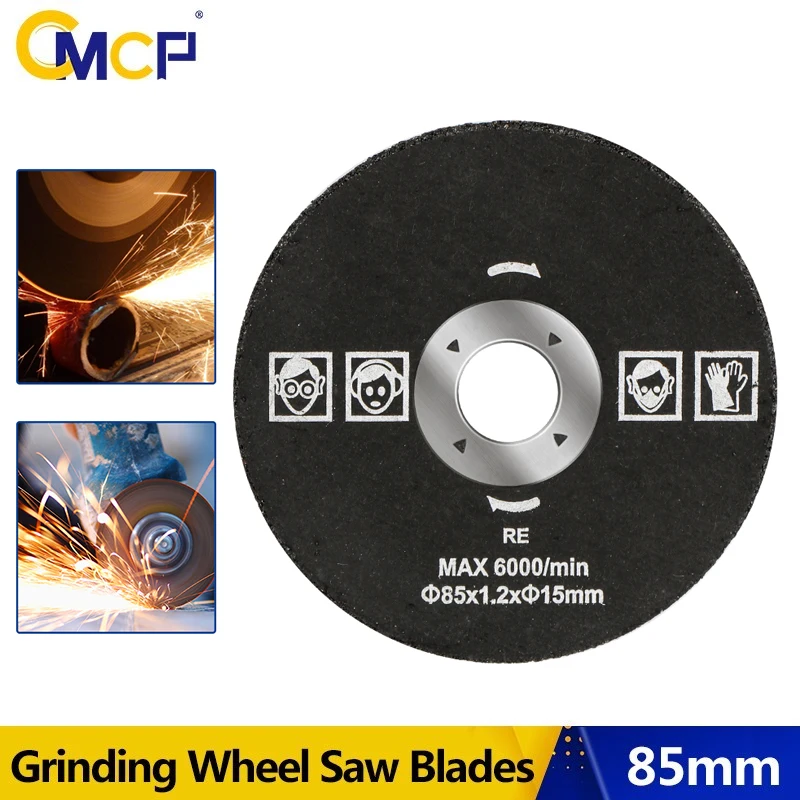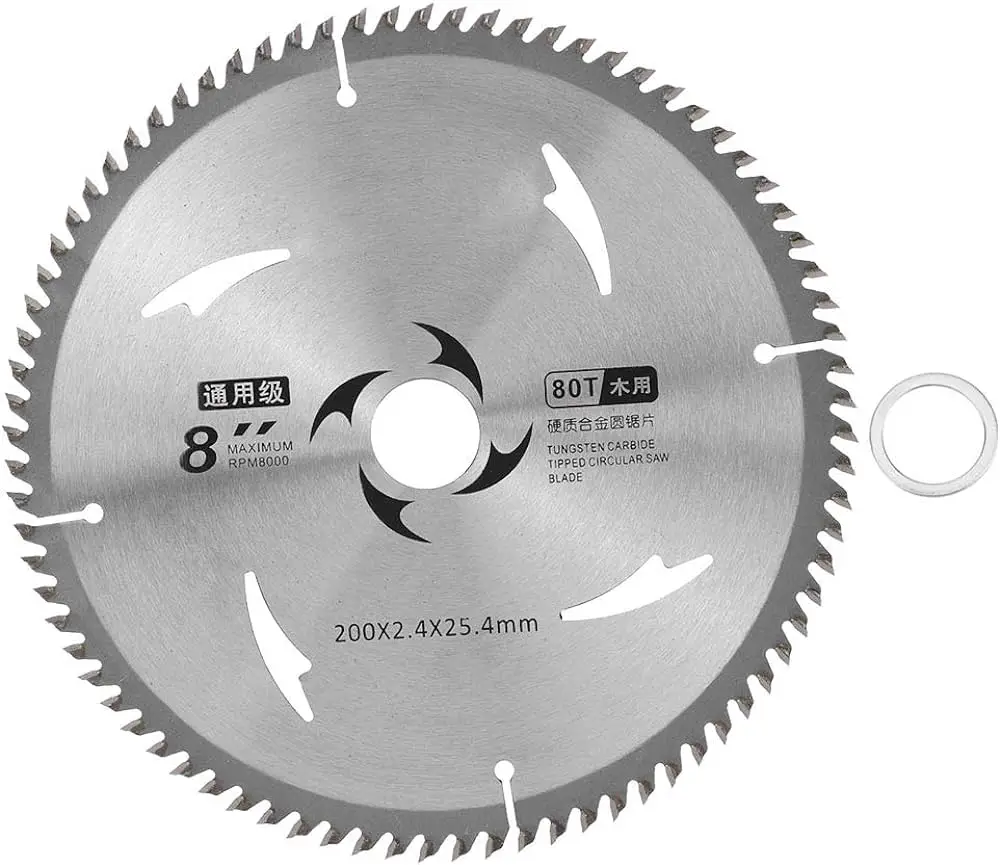Saw blades can cut metal efficiently, choose the right blade for the metal thickness. Metal cutting blades vary in type and size, ensuring a clean and precise cut.
Metal cutting with saw blades requires the correct blade type and technique. Understanding the metal’s characteristics and thickness is crucial for selecting the appropriate blade. By following safety precautions and using the right tools, you can achieve accurate and efficient metal cutting results.
We will explore the key factors to consider when cutting metal with saw blades, along with tips to optimize your cutting process. Let’s delve into the world of metal cutting and discover the best practices for achieving clean and precise cuts with saw blades.

Credit: www.aliexpress.com
Selecting The Right Saw Blade
Choosing the right saw blade is crucial for achieving precise and efficient cuts when working with metal. To ensure your cutting process is smooth and effective, it’s essential to consider various factors when selecting the right saw blade.
Consider The Material
The first step in selecting the right saw blade for cutting metal is to consider the material you are working with. Different metals require specific types of blades for optimal cutting results.
Choose The Right Tooth Configuration
To achieve clean and accurate cuts, you must choose the appropriate tooth configuration for your saw blade. The number and shape of the teeth will impact the cutting performance.
Optimizing Cutting Parameters
When cutting metal with a saw blade, optimizing cutting parameters is essential for achieving efficient and precise results. By adjusting the blade speed and feed rate, as well as using appropriate coolant or lubrication, you can enhance the cutting process.
Blade Speed And Feed Rate
- Blade speed: Determines how fast the blade moves through the metal.
- Feed rate: Controls how quickly the material is fed into the blade.
Coolant Or Lubrication
- Coolant: Keeps the blade and metal cool during cutting.
- Lubrication: Reduces friction between the blade and the metal.
Ensuring Safety Measures
To ensure safety when using a saw blade to cut metal, always wear proper protective gear, including safety goggles and gloves. Ensure the blade is securely fastened and the metal is clamped in place before cutting. Regularly inspect the blade for any signs of wear and tear to prevent accidents.
Use Of Personal Protective Equipment
Always wear safety goggles and heavy-duty gloves when using a saw blade to cut metal. These protective gears are crucial to prevent any potential injuries from flying metal fragments or sharp edges.
Secure Workpiece And Saw
Before starting the cutting process, ensure that the workpiece is firmly secured in place. Make sure to use the appropriate clamps or vices to hold the metal securely to prevent any movement during the cutting process. Additionally, make sure the saw blade is properly installed, tightened, and in good condition to avoid any accidents.

Credit: www.amazon.com
Maintenance And Blade Care
Proper and regular maintenance of saw blades plays a vital role in ensuring their longevity and optimal performance. By following some essential maintenance practices, you can extend the lifespan of your saw blade and achieve precise cuts every time. In this section, we will discuss two key aspects of blade care: regular inspection and proper storage.
Regular Inspection
A regular inspection of your saw blade helps you identify any potential issues and take appropriate action before they escalate. Inspecting the blade before and after each use ensures that it is in optimal condition for cutting metal. Here’s what you need to look out for during the inspection:
- Tooth Condition: Check the teeth for any signs of damage, such as missing or chipped teeth. Damaged teeth can lead to poor cutting performance and can also pose safety risks. If you notice any abnormalities, it’s essential to replace the blade promptly.
- Blade Warping: Examine the blade for any signs of warping or bending. A warped blade can cause undesirable cuts and put additional strain on your saw. If you observe any warping, it’s crucial to replace the blade to maintain accuracy and prevent further damage to the saw.
- Cleanliness: Ensure the blade is clean from any debris or residue. Build-up can affect cutting performance and accuracy. Clean the blade using an appropriate cleaning agent or solvent, making sure to follow the manufacturer’s instructions.
- Tightness: Check the tightness of the blade’s arbor nut and flanges. Loose arbor nuts can lead to wobbling and compromise the safety of your cuts. Tighten them securely using the recommended tools.
Proper Storage
Proper storage of your saw blade is crucial to prevent it from getting damaged or dull when not in use. Consider the following tips to ensure your saw blade remains in optimal condition:
- Clean and Dry: Before storing the blade, make sure it is clean and dry. Any moisture or corrosive substances can lead to rust and deterioration over time. Wipe the blade with a clean cloth, ensuring it is entirely dry before storage.
- Protective Cover: Place a protective cover or sheath over the blade to shield it from accidental damage and dust accumulation. This will help maintain the sharpness of the blade and extend its lifespan.
- Temperature and Humidity: Store your saw blade in a controlled environment with moderate temperature and humidity levels. Extreme temperatures and high humidity can negatively impact the blade’s condition and performance.
- Secure Storage: Store the blade in a safe and secure location, away from any potential damage or accidental contact. Consider using a specifically designed storage box or rack to keep the blade organized and protected.
- Separate Storage: If you have multiple blades, avoid stacking or storing them in direct contact with each other. This prevents any potential damage caused by blade-to-blade contact and ensures easy accessibility when needed.
By incorporating regular inspections and proper storage practices into your blade care routine, you can maximize the lifespan of your saw blade, achieve optimal cutting performance, and enhance the overall efficiency of your metalworking projects.
Troubleshooting Common Issues
When it comes to using a saw blade to cut metal, there are a few common issues that can arise. These issues can negatively impact the quality of your cuts and hinder your overall productivity. In this section, we will discuss two common problems that you may encounter and provide some troubleshooting tips to help you overcome them.
Overheating Of Blade
One of the most common issues faced when using a saw blade to cut metal is the overheating of the blade. This can happen due to various reasons, such as incorrect blade selection, excessive feed rate, or inadequate coolant.
To prevent overheating, consider the following troubleshooting tips:
- Ensure that you are using the correct blade for the type of metal you are cutting. Different metals require different blade tooth configurations and materials.
- Check the speed of your blade. Running the blade at a higher speed than recommended can generate excessive heat. Refer to the manufacturer’s guidelines for the optimal speed setting.
- Monitor your feed rate. Feeding the material too quickly can cause the blade to heat up. Adjust the feed rate according to the thickness and hardness of the metal being cut.
- Use an appropriate coolant or lubricant to reduce friction and cool down the blade. Apply it regularly to ensure constant cooling throughout the cutting process.
- Inspect the blade for any signs of damage or wear. A dull or damaged blade can generate more heat. Replace the blade if necessary.
Uneven Cuts
Another common issue that may occur when using a saw blade to cut metal is the production of uneven cuts. This can be frustrating as it affects the accuracy and appearance of the final product.
To troubleshoot uneven cuts, consider the following tips:
- Check the blade’s tension. An improperly tensioned blade can lead to vibrations and result in uneven cuts. Adjust the tension as per the manufacturer’s instructions.
- Inspect the teeth of the blade. Damaged or worn teeth can cause the blade to wander and produce uneven cuts. Replace the blade if needed.
- Ensure that the material is firmly secured in place. Any movement or flexing of the metal can lead to inaccurate cuts. Use clamps or other securing methods to minimize movement.
- Take note of the cutting speed. Cutting too quickly can result in uneven cuts. Find the right balance between speed and control.
- Clean and maintain the blade regularly. Residue buildup or debris on the blade can affect its performance and cause uneven cuts. Clean the blade after each use.

Credit: www.aliexpress.com
Frequently Asked Questions On Saw Blade Cut Metal
Can A Saw Blade Cut Metal?
Yes, a saw blade specifically designed for cutting metal can easily cut through various metals including steel, aluminum, and iron. These blades have specialized teeth and a high enough speed to efficiently cut through metal without damaging the blade or the workpiece.
How Does A Saw Blade Cut Through Metal?
A saw blade cuts through metal by applying a combination of cutting force and high-speed rotation. The teeth of the blade make contact with the metal, creating friction and generating heat. This heat softens the metal, allowing the blade to easily cut through it with minimal effort.
What Types Of Metal Can Be Cut With A Saw Blade?
A saw blade can cut through a wide range of metals, including steel, aluminum, copper, brass, and iron. However, the type of blade needed may vary depending on the specific metal being cut. It is important to choose the right type of blade to ensure clean and efficient cuts.
Conclusion
Saw blade cut metal provides an efficient and precise method for metal fabrication. With various blade options available, it offers versatility and productivity for different projects. Whether you’re a DIY enthusiast or a professional metalworker, choosing the right saw blade can make a significant difference in your cutting process.


